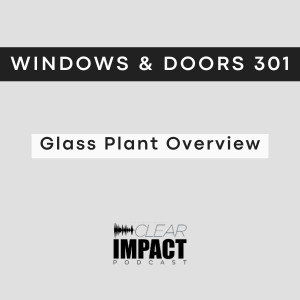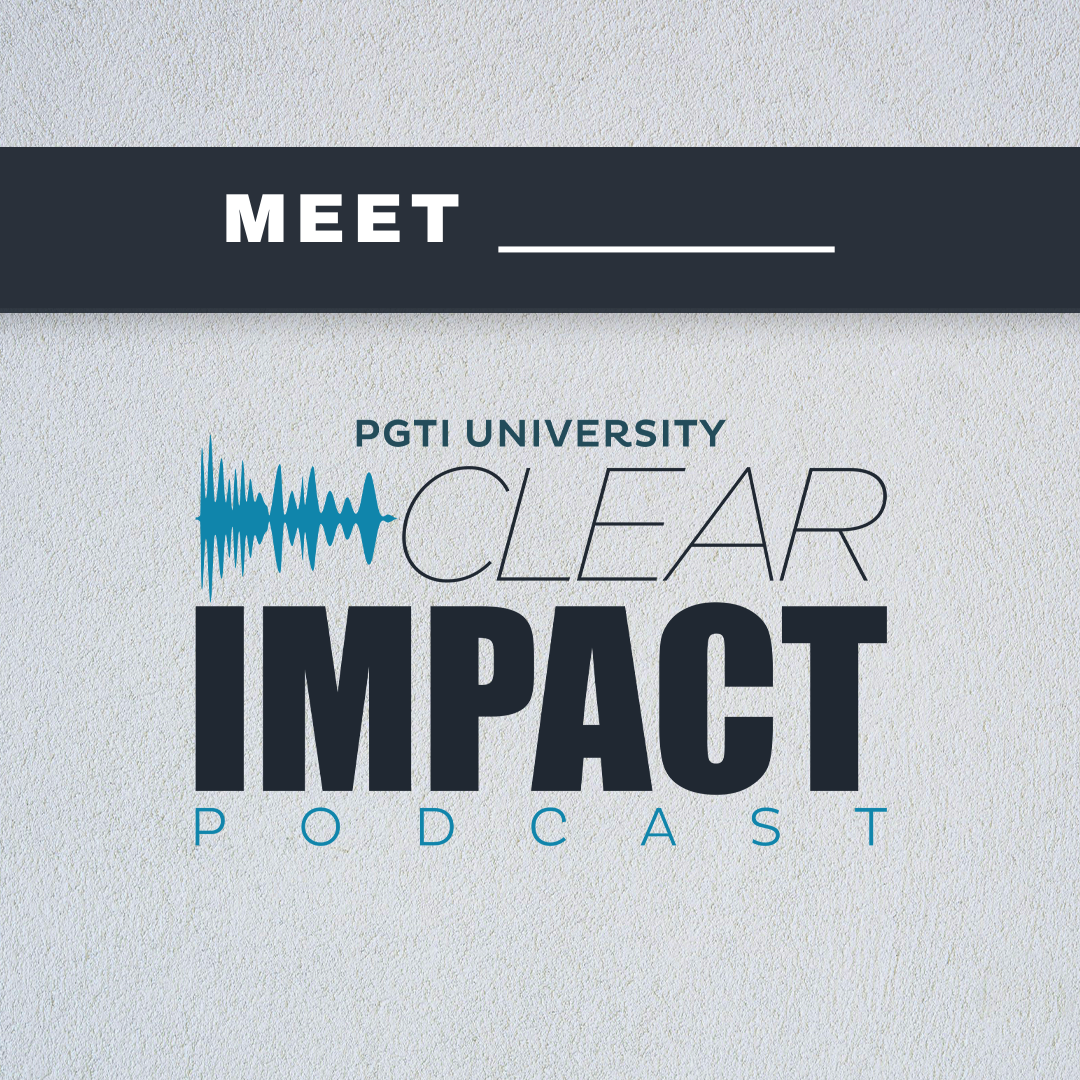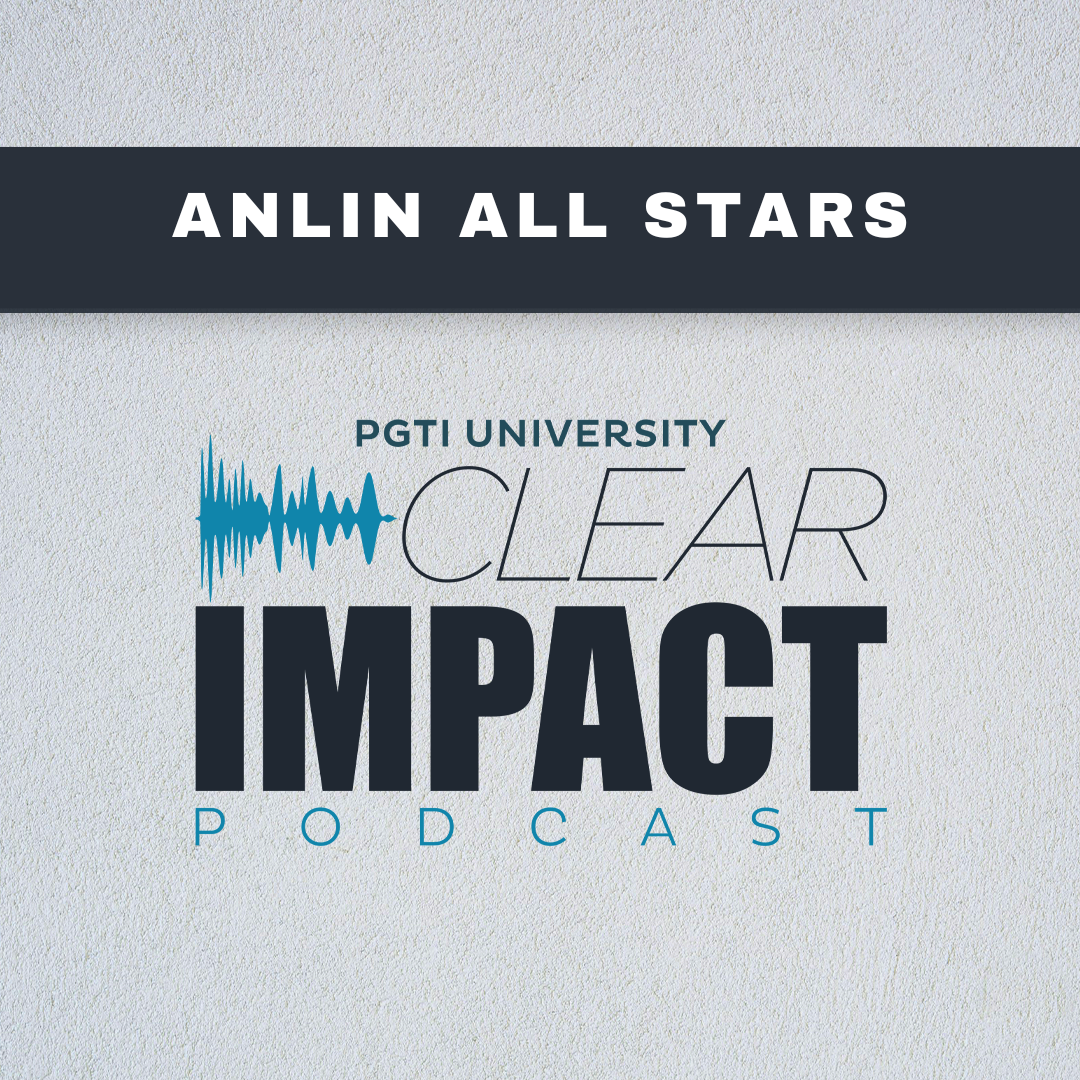Episode Transcript
Speaker 1 00:00:05 Welcome to the Clear Impact Podcast, brought to you by pg t I University. Thanks for joining us today. My name is Sherry Connor and I am your host. Good morning. We are here on the Clear Impact Podcast and we are on the road this week. We are being hosted by Western Window Systems in Phoenix, which is one of our family of brands. And with me today is Patrick Jameson.
Speaker 2 00:00:36 Yes, good morning. Good
Speaker 1 00:00:37 Morning. And so Patrick, I just got in yesterday, but you've been here, uh, for a couple days already. And so tell us a little bit about what you were doing.
Speaker 2 00:00:47 So, Jim Shank and I, we flew in Sunday evening. We were able to arrive first thing Monday morning and start preparing for video shoots. We are installing a performance door, pivot door, 79 80 mold with a fixed unit, 76 30 series. We were waterproofing, we sealed it with actual sealant, installed everything all in one day.
Speaker 1 00:01:10 Wow. And so how big, was this an actual size door
Speaker 2 00:01:13 Or Yes, it, it was an actual size door. Okay.
Speaker 1 00:01:16 So not just like a little pretend sample, like a real legit door.
Speaker 2 00:01:20 Legit. I would have to say this thing is probably seven feet wide, probably nine feet tall.
Speaker 1 00:01:26 Oh, that's a little bigger than what we usually see at our normal install videos.
Speaker 2 00:01:31 Correct. So all the other doors were always a six oh six eight door. They call it a 72 inch by 80 inch tall door. And this one's gotta be seven feet wide, about nine feet tall.
Speaker 1 00:01:41 Wow, okay. It's a different type of environment in the western part of the US because they don't have to worry about hurricanes. Correct. Obviously <laugh> mm-hmm. <affirmative>, they don't get much rain out here, so they don't really have to worry too much about water as well. What were some of the other differences that you noticed?
Speaker 2 00:01:57 Uh, one of the other big differences was not as much humidity or moisture. Mm.
Speaker 1 00:02:02 Okay.
Speaker 2 00:02:03 So you don't see a lot of like the zip system that we see a lot in Florida. You don't see a lot of, uh, W R B, the weather resistant barrier, the tyvec paper. Mm-hmm. <affirmative>. So those are some really big differences. Of course, you have no block homes, everything is all stick or wood substrates. Mm-hmm. <affirmative>,
Speaker 1 00:02:20 What is the zip system? I don't know what that means.
Speaker 2 00:02:23 It's a brand, it's kind of like tissues and kleenex. Um Okay. It's a, it's a great way to waterproof a building from top to bottom.
Speaker 1 00:02:31 Okay. But they have different requirements as in terms of energy and things like that. They still have the solar issues, especially in the southwest. You know, Phoenix obviously Arizona, New Mexico, Southern California, all of California really, you know, even up into like Nevada they have, you know, higher energy requirements. Yep,
Speaker 2 00:02:50 That's correct. And the doors that we were installing the last couple of days were all thermally broken and like I was informed we would not be able to sell any of, of the products if they were not thermally broken in California. So California is a, a very energy required state.
Speaker 1 00:03:05 Mm-hmm. <affirmative>. And so for someone who might not be familiar with that term, what is thermally broken?
Speaker 2 00:03:10 Thermally broken is where one of the extrusions that they have actually comes to us in two different pieces and they bonded together with a, like a type of, uh, plastic.
Speaker 1 00:03:20 Okay.
Speaker 2 00:03:21 So the energy transfer from outside to inside or inside to outside is slowed down or almost eliminated. So you get a very good U factor rating. Mm-hmm.
Speaker 1 00:03:30 <affirmative>, because aluminum obviously is a metal and so that can transfer heat a little bit more readily than a vinyl does. So by having that piece in the middle, that's what that means is that it's you're breaking the thermal flow.
Speaker 2 00:03:43 Yep. Correct. Breaking that, that energy transfer as much and as quickly from one side to the other and they get a very good U factor rating doing that. Mm-hmm.
Speaker 1 00:03:53 <affirmative>, do you know if the pieces that you filmed, obviously they need some editing and you know, we'll need to review them and all of that, but those will eventually go on our YouTube page, right?
Speaker 2 00:04:03 Absolutely. And these are gonna be great videos for even somebody that wants to know about using the flashing the tape, how to flash a wood frame opening out in this area, for example, what is a bottom weep system look like with sealant, things like that.
Speaker 1 00:04:16 Hmm. Nice. Um, and then obviously once we have those videos edited and on our YouTube page, we'll also then write an assessment and load them onto our L M S, which is where all of the other Western product knowledge courses are currently living.
Speaker 2 00:04:32 Absolutely. Yep. And they're gonna be great courses with the assessments for future learners to learn about these different products.
Speaker 1 00:04:39 That's awesome. What has been your experience interacting with the people here at Western? Oh,
Speaker 2 00:04:44 Everybody is just very welcoming. Everybody says hello and you know, just, it's a great environment. Everybody out here in Phoenix, honestly.
Speaker 1 00:04:52 Mm-hmm. <affirmative>. And I did notice that you made a beeline for the coffee machine this morning, and then when that one didn't work, you went and found another coffee machine and then we, we saw a tour of the new facility earlier this morning with Daryl and Jason there was yet another coffee machine. And so
Speaker 2 00:05:08 I have found the four coffee machines closest by <laugh>. So if one fails, I know where the next one's at <laugh>.
Speaker 1 00:05:14 That's awesome. Uh, anything else you'd like to share about your experience here? Um, helping with training on the Western products?
Speaker 2 00:05:22 Huggy Bear and Marcos are two great team members that work with Todd. Mm-hmm. <affirmative> and all three of them are just super to work with. They inform me what we do here in Phoenix compared to out like in Florida. Mm-hmm. <affirmative> the products, the information, the three of them have such a great background with the experience with construction mm-hmm. <affirmative>, so all three of them were just hands down. Great, great guys to work with.
Speaker 1 00:05:48 That's awesome. Yeah. And Huggy can really cook a nice lunch too, I heard. Yeah. We got to experience that when we were, uh, earlier this year, so mm-hmm. <affirmative>. Um, well that's awesome. Well, I'm so glad to get to connect with you here in this setting and we have our podcast studio set up in the wrestling conference room, which is kind of a fun little space to be in. Yep. And, uh, I'm looking forward to talking with some other folks from the Western team this week. Perfect. Thank you very much for having me. Awesome. Thanks Patrick. PG t i University is the customer education team for an entire family of brands. We began with the original Easy Breeze, porch and closure line, then became P G t, America's leading brand of impact resistant windows and doors. We then added cgi, CGI I c Window, Western Windows Systems, new South Windows, echo windows, and doors, and lin windows and doors, and our latest acquisition Martin Garage doors. We create products built to withstand major storms, keeping people safe, secure, and prepared. Our exceptional brands give you the protection you need without compromising design or functionality. PPG t i University is here to educate you, our listener, so that you can be a more informed consumer of window and door products.


